7 steps to effectively scale your SaaS business
Taking a SaaS company to €100M+ might sound like a long shot, but it doesn’t have to be. We’ve seen it time and time again: some SaaS startups stall out, while others grow fast and exit big. The difference? It’s not luck. It’s having a clear system that actually works. At Codelevate, we’ve helped founders go from early traction to life-changing exits using a proven growth framework. It’s not a fluffy funnel or theory pulled from a book. It’s a system built by real operators, tested in the trenches, and designed for ambitious SaaS founders like you.
In this blog, we’re breaking down that exact framework step-by-step, so you can scale sustainably and exit on your terms. Let’s dive in!
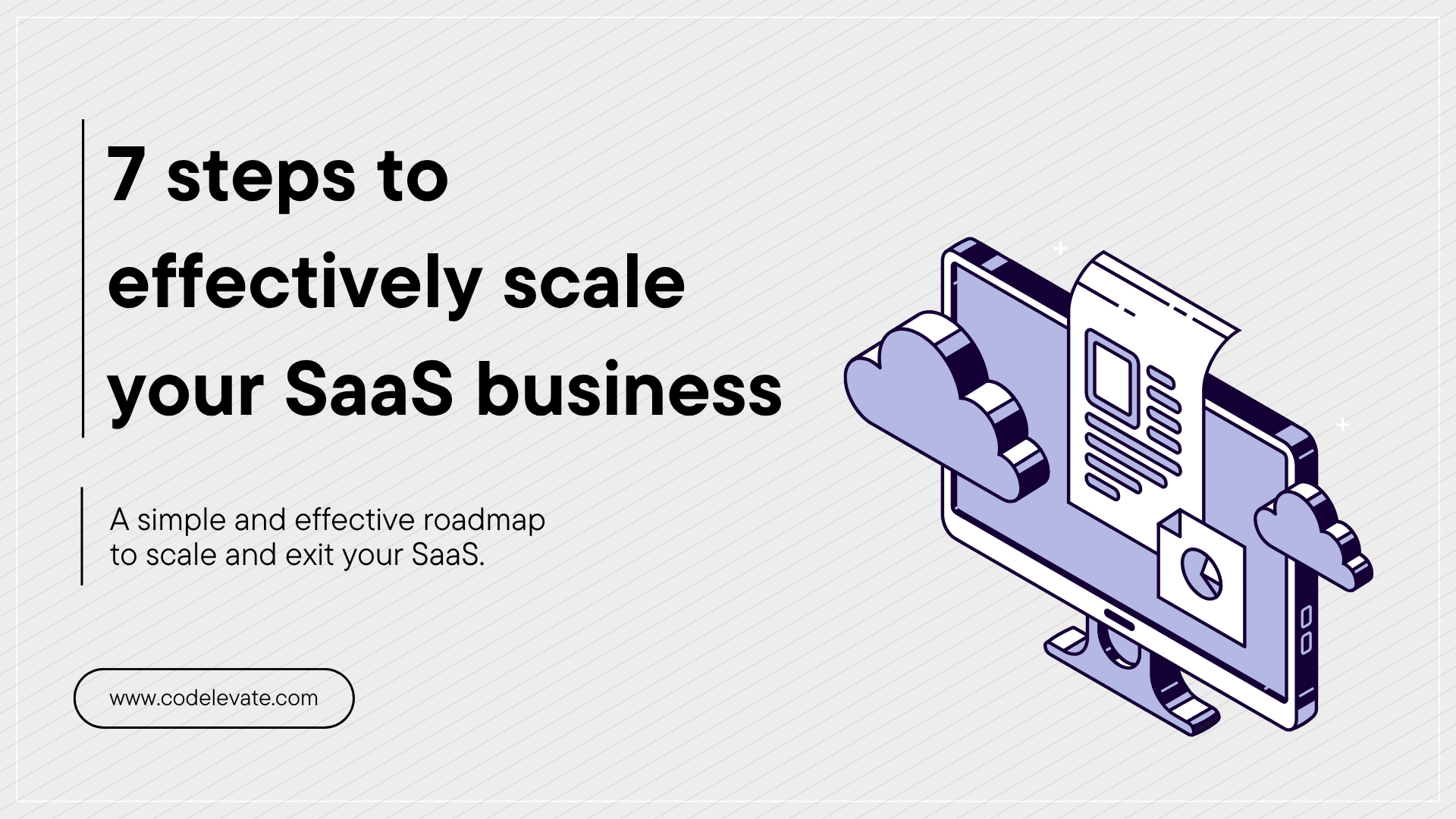
Our 7-step growth framework
Step 1: Properly calculate unit economics & set up tracking
Before you can grow, you need to know what’s working and what’s not. That starts with unit economics. Too many SaaS businesses pour money into marketing and sales without understanding their core numbers. This leads to wasted spend, unclear ROI, and scaling chaos. Here’s what to focus on:
- Customer Acquisition Cost (CAC): How much are you spending to acquire one paying customer?
- Customer Lifetime Value (LTV): What is each customer worth to you over their relationship with your product?
- Gross Margins: Are your margins healthy enough to fund growth?
- Payback Period: How long does it take to earn back your CAC?
Once you have these numbers, set up reliable tracking. Use tools like HubSpot, Segment, or Mixpanel to monitor performance across the funnel. Your goal is to create a clear data trail for every dollar in and out. This allows you to make smart decisions as you scale and avoids the “gut feeling” trap many startups fall into.
Step 2: Turn on matched audiences, retargeting & lookalike ads
Once your tracking is set up, it’s time to build a predictable acquisition engine. Paid advertising, when done right, can be your fastest lever for growth. But instead of targeting cold audiences with generic ads, leverage your existing user data to create high-performing campaigns. Here’s how:
- Matched Audiences: Upload your email list or customer data to platforms like LinkedIn Ads, Meta Ads Manager, or Google Ads to target people who already know you.
- Retargeting: Remarket to users who visited your site or interacted with your product but didn’t convert.
- Lookalike Audiences: Use your best customers to train the algorithm. Platforms like Facebook and Google can find people similar to your high-LTV users.
Start with small budgets and test aggressively. Track key metrics like CPL (cost per lead), conversion rate, and CAC. The magic here is focusing on warm and high-intent users instead of trying to win over strangers with cold ads. It lowers your CAC and improves conversions dramatically.
Step 3: Determine CPL & CAC for all possible channels
Every marketing channel has a cost—but not all of them have the same return. Once you’ve begun experimenting with paid acquisition, it’s time to zoom out and analyze all your channels. That includes:
- Organic (SEO, content marketing)
- Paid (Google, Facebook, LinkedIn, YouTube)
- Partnerships & affiliates
- Cold outbound
- Webinars & events
For each channel, calculate:
- CPL (Cost Per Lead): Total spend ÷ number of leads
- CAC (Customer Acquisition Cost): Total spend ÷ number of customers
Then compare those numbers across channels. You’ll start to see where your most efficient growth opportunities are hiding. Pro tip: Channels that produce lower CPLs don’t always produce better CACs. Sometimes a more expensive lead source (like outbound sales) results in higher LTV customers. Data is your compass here. Follow it.
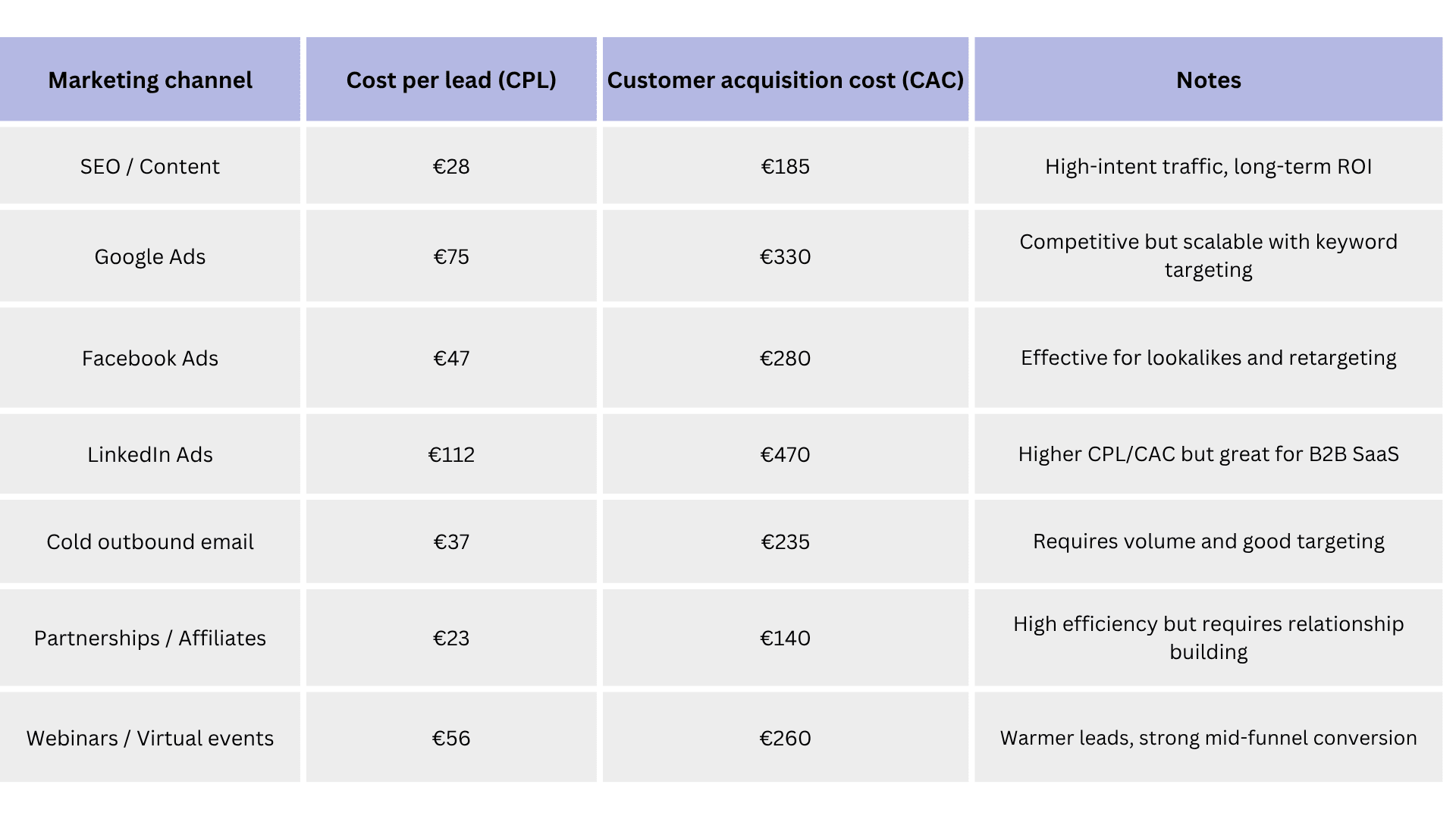
Step 4: Improve conversion and scale up what works
Now that you’ve identified your best channels, it’s time to double down. But before you scale, you need to optimize your funnel. There’s no point pouring more traffic into a leaky bucket. Look closely at your conversion flow:
- Is your landing page clear and persuasive?
- Is your trial onboarding experience driving real usage?
- Are there unnecessary steps causing drop-offs?
- Are you nurturing leads or just collecting emails?
Use tools like Hotjar to watch real user behavior and identify sticking points. Run A/B tests to increase signups, demo bookings, or trial-to-paid conversions. Then, scale only what’s working. This step is about getting your funnel tight and efficient—so every dollar you invest in acquisition returns multiple dollars in revenue.
Step 5: Hire head of sales and expand your SDR + AE teams
Once you’ve built a repeatable sales motion, it’s time to scale your team. The key hire here is a Head of Sales—someone who can build and lead a quota-crushing sales organization. Why is this role so critical? Because founders can’t sell forever. At some point, you need a team to take over outbound, demos, and closing deals. Here’s what we recommend:
- Hire an experienced sales leader (ideally with SaaS experience)
- Build out your SDR team (to generate and qualify leads)
- Build out your AE team (to run demos and close deals)
- Document your sales playbook so the process can be repeated by anyone
This isn’t about hiring 10 people overnight. It’s about laying the foundation for scalable sales so you’re not the bottleneck anymore. If you’ve reached this stage, congratulations—you’re moving from founder-led sales to a real sales machine.
Step 6: Professionalize, systematize, hire M&A advisor & exit
This is the step where everything changes. Once your SaaS company is generating predictable revenue, has strong unit economics, and a functioning sales engine, it’s time to professionalize.
That means:
- Building operational systems (finance, HR, legal, product)
- Hiring experienced execs to lead departments
- Creating SOPs for every core function
- Moving from founder-led chaos to system-led scale
At this point, you’re no longer a scrappy startup. You’re a legitimate growth-stage business. And if your goal is a strategic exit, this is the time to bring in an M&A advisor. A great advisor will:
- Help you prepare for due diligence
- Connect you with potential buyers or investors
- Maximize your valuation
- Guide you through the exit process
This is how founders go from operator to multi-million-dollar exit. Whether you’re aiming for PE, acquisition, or IPO—this is your launchpad. If you’re looking to connect with an advisor, a platform like Axial can help you find vetted M&A professionals.
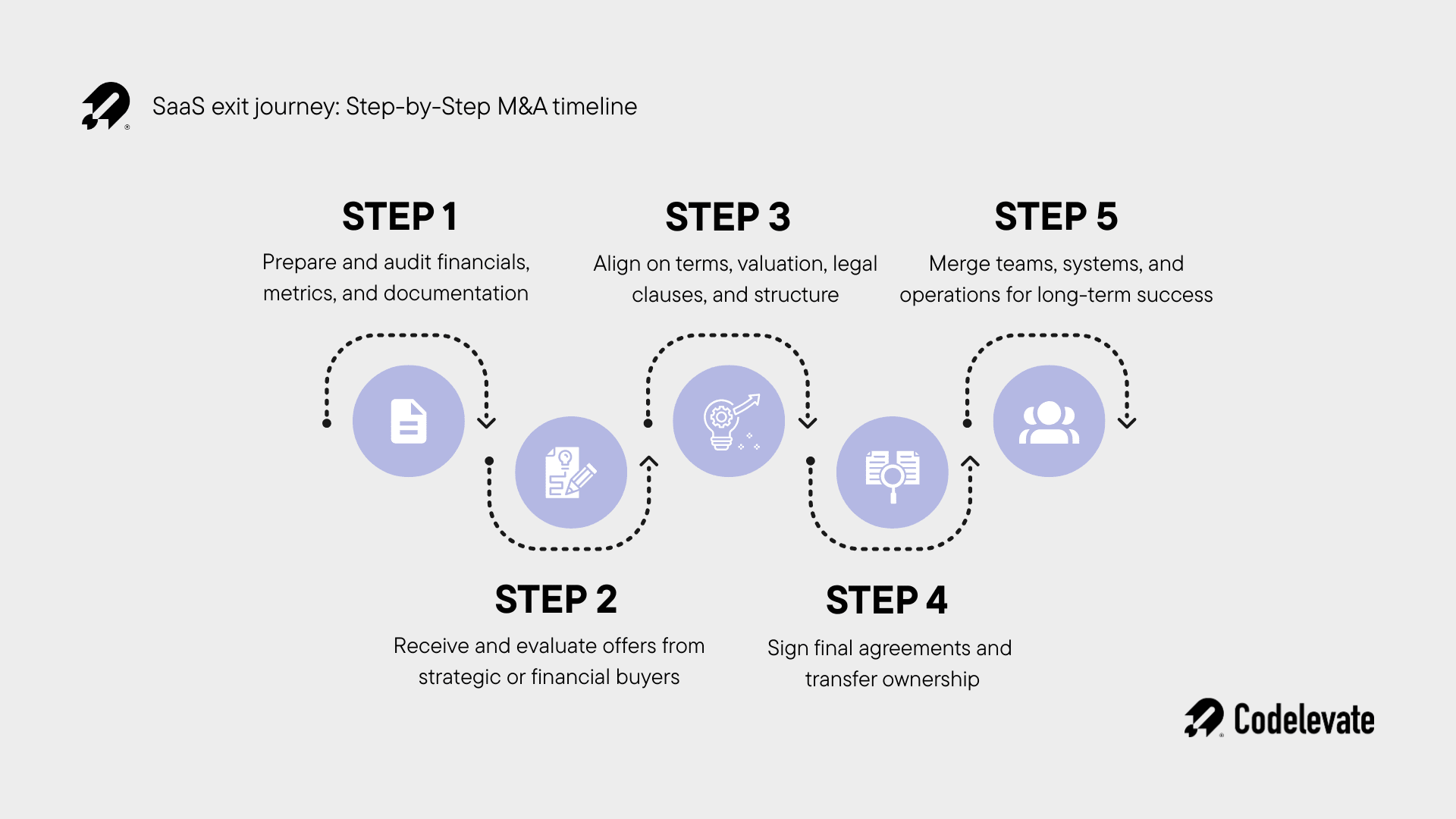
Step 7: Expand existing customers with cross and upsells
The easiest customer to sell to? The one already paying you. Once your acquisition machine is humming, shift focus to expansion revenue. There are two powerful ways to grow revenue from your existing base:
- Upsells: Encourage customers to upgrade to higher tiers, add more users, or unlock premium features.
- Cross-sells: Offer complementary products, add-ons, or services that increase their value.
This step is often overlooked because founders are so focused on new logos. But expansion revenue is more profitable, faster to close, and less risky than cold acquisition. To get started:
- Analyze your top customers—what features or services do they use most?
- Bundle those into higher plans
- Use in-app prompts or emails to suggest upgrades
- Train your customer success team to look for expansion opportunities
Bonus: expansion revenue improves your LTV and CAC payback period, which helps with fundraising and valuation. You can also consider tools like Gainsight or Totango to help drive customer success and upsell campaigns.
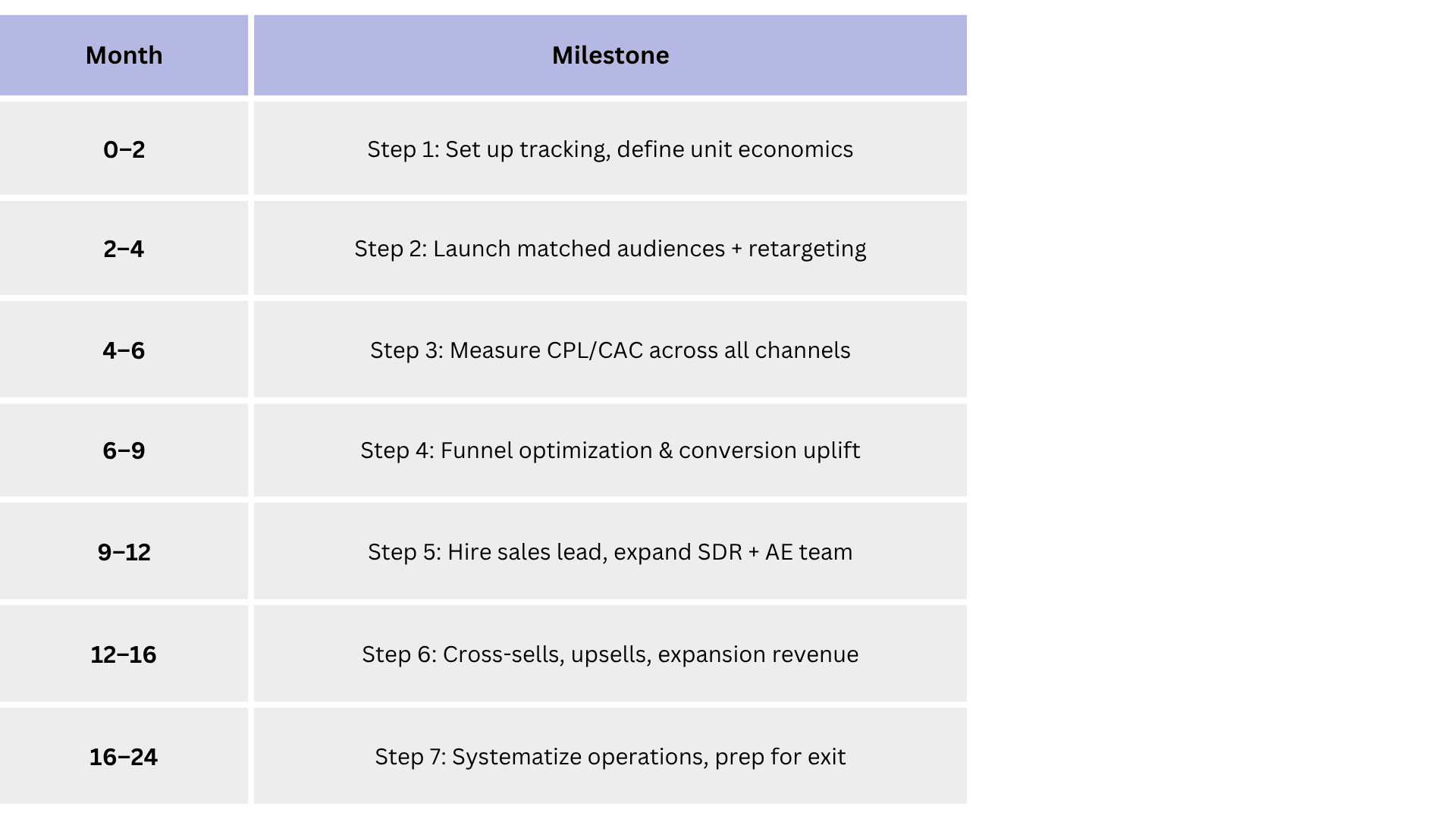
Expand existing customers with cross and upsells
Are you building your first SaaS product or scaling toward your next milestone? Download our free SaaS playbook and launch smarter!
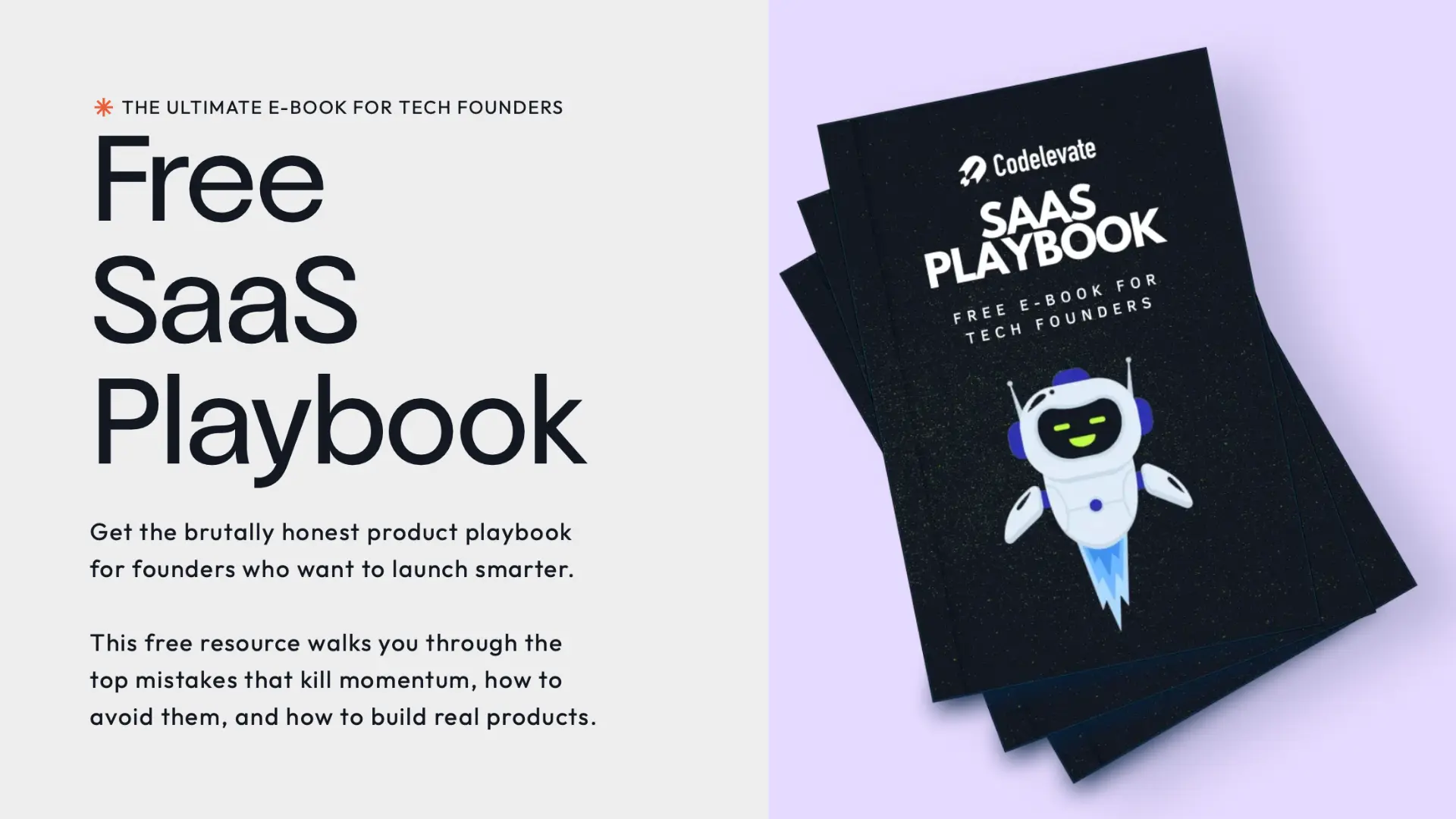
Conclusion
The truth is, the most successful SaaS companies don’t rely on guesswork or hacks. They follow a clear, structured path built on data, discipline, and momentum.
This 7-step system is your playbook:
- Get your unit economics right
- Launch and test high-converting ads
- Know your numbers across all channels
- Optimize before you scale
- Build a world-class sales team
- Grow revenue through your existing customers
- Systematize and prepare for exit
Every step in this process builds on the last. Skip one, and things break. But follow it with focus—and you’re setting yourself up for growth.
At Codelevate, we specialize in implementing this growth system inside real SaaS firms. We’ve helped dozens of companies go from product-market fit to strategic exits. If you’re ready to scale smart, book a free call with us today.
Let’s keep building what's next!


.webp)
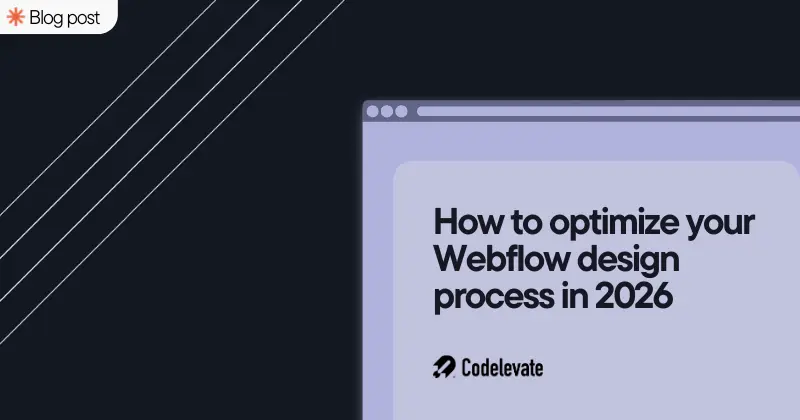

.svg)




